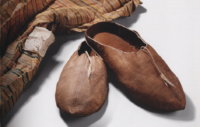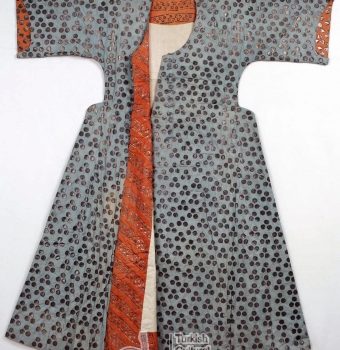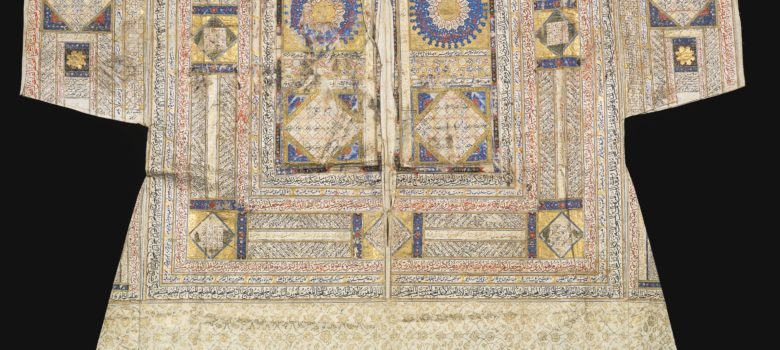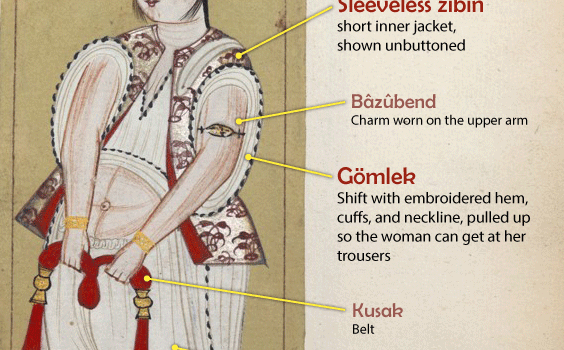Throughout the 16th century, there appears to have been only one female hairstyle: a single braid down the back. As you can see on the two rightmost women in the drawing above, the braid could be ended with a jeweled tassel of gold or silver chains called a saçbağı (sach-baa-ih).…
Continue reading

The most common type of footwear, for men and women alike, was a soft leather sock called mest or iç edik, slipped into a leather slipper called an edik or pabuç (or papuç, or babuç). Mest/Iç Edik Mest/iç edik were worn as indoor shoes. Not many have survived, but here’s a…
Continue reading
You want to do Ottoman Turkish garb. But you don’t have time to make a complete outfit, or the money to order one from Etsy. Here’s a quick and dirty guide to throwing together a first outfit. The Pieces • Colors • Making a Cheater’s Kaftan The Pieces Caksır (trousers): Pajama…
Continue reading
Garments could be fully lined, half-lined to the hip, or unlined, and the lining could be made of silk, cotton, or the ultimate in luxury, fur. There’s no discernible pattern to which garments were fully lined, half-lined, or unlined. (Or rather, we don’t know enough about the use of each…
Continue reading
[in progress] Colors Any contrasting color is acceptable. Here are some of the facing colors documented to 16th-century garments, courtesy of Silks for the Sultans: Deep red (p. 73) Yellow (p. 135) Pistachio green (p. 102) Olive green (p. 90) Dark green (p. 107) Light silvery blue (p. 69) The page…
Continue reading

Two triangular gores were inserted into the front opening of all robes. The most common style, used with all inner clothes and most overcoats, was for the gore on the right (the button side) to come up to the waist, and for the gore on the left (the buttonloop side)…
Continue reading
[in progress] Taken individually, the plethora of Ottoman Turkish robes–the kaftans, zibins, vests, jackets, robes of honor, overcoats, cloaks, and what-is-that-I-have-no-idea-it’s-a-thing-with-sleeves–are a vast and unruly confusion. Break them down into pieces, and you start to see that they’re modular. Ottoman tailoring is simple, and the garment shapes it can create…
Continue reading

[in progress] How were 16th-century gömleks made? Persian-style, with the skirts gathered at the hip? Egyptian-style, with the underside of the sleeve made in a piece with the side of the shirt? Using rectangular construction, like early European tunics? Or a mashup of Egyptian and rectangular tailoring with a Turkish…
Continue reading
From head to foot, a Turkish lady might wear: Istefan | Diadem The “crown” some women wear around the base of their hats is called istefan, from the Greek word for “diadem.” Except at court, istefan were decorations, not status markers; a toddler wears one in a 1574 watercolor of…
Continue reading

The hardest part of Turkish clothing is figuring out the layers. You’ve got long robes and short robes and bits poking out and layers on top and layers underneath and layers that must have been added just to make you tear your hair out, and which ones do you wear…
Continue reading







